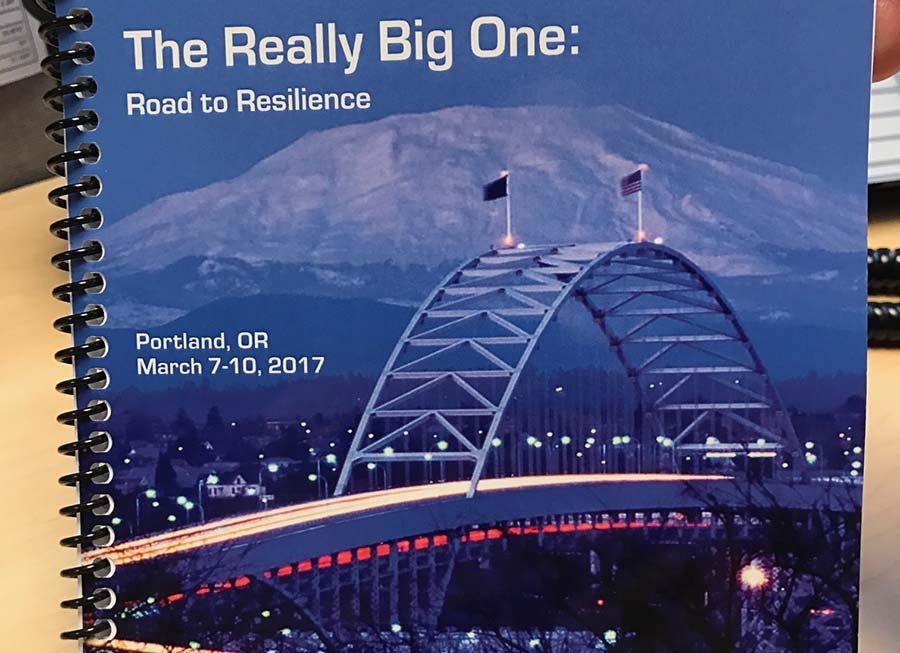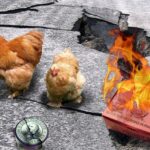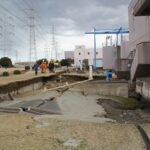The Earthquake Engineering Research Institute is holding its 69th annual meeting this week in Portland.
I dropped in on today’s lunchtime keynote, where I had the pleasure of sitting next to Lloyd Cluff, former chair of the California Seismic Safety Commission and erstwhile president of the Earthquake Engineers Research Institute.
The affable 83-year old regaled me with tales of various earthquakes he’s experienced. He also offered up some fresh monikers for every Oregonian’s favorite nightmare: the pending Cascadia subduction zone earthquake.
Cluff said seismologists envision two possible scenarios for the Cascadia event: “One is apocalyptic; the other is decades of terror.”
The apocalyptic model involves a complete rupture of the Cascadia fault, from British Columbia to Northern California. The decades of terror scenario involves sections of the fault rupturing one at a time, with each new rupture triggering another quake, approximately one per decade.
Cluff and I agreed the one-time apocalyptic model was the preferred option.
In Portland one area of concern revolves around unreinforced masonry structures like schools and older downtown office buildings. On this subject Cluff was optimistic, relatively speaking.
Subduction zone quakes like the Cascadia last a long time but the shaking is not as jerky. This bodes well (comparatively speaking) for masonry buildings, which are especially vulnerable to sharp jolts, Cluff said.
Soil composition is a key variable in determining the stability of a building. Cluff cited as an example a cluster of unreinforced masonry buildings built on rock formations that withstood the 1967 quake in Caracas, Venezuela. Modern buildings constructed on permeable soils collapsed, he said.
Cluff said his own house on Mt. Sutro in San Francisco had been anchored to rock in the 1930s by an Italian engineer who worked on the Golden Gate Bridge.
The lunchtime keynote was delivered by Lucy Jones, an acclaimed former U.S. Geological Survey seismologist. In 2014 Jones partnered with L. A. Mayor Eric Garcetti to develop earthquake resilience strategies for the southern California metropolis.
Her speech was titled, evocatively, “Life Safety in the City: There is More to Life Than Not Being Crushed.”
The EERI conference continues through Friday.
Earthquake consultant Lloyd Cluff on surviving #Cascadiaquake in downtown Portland pic.twitter.com/gIBh5RgQIi
— Oregon Business (@OregonBusiness) March 8, 2017





